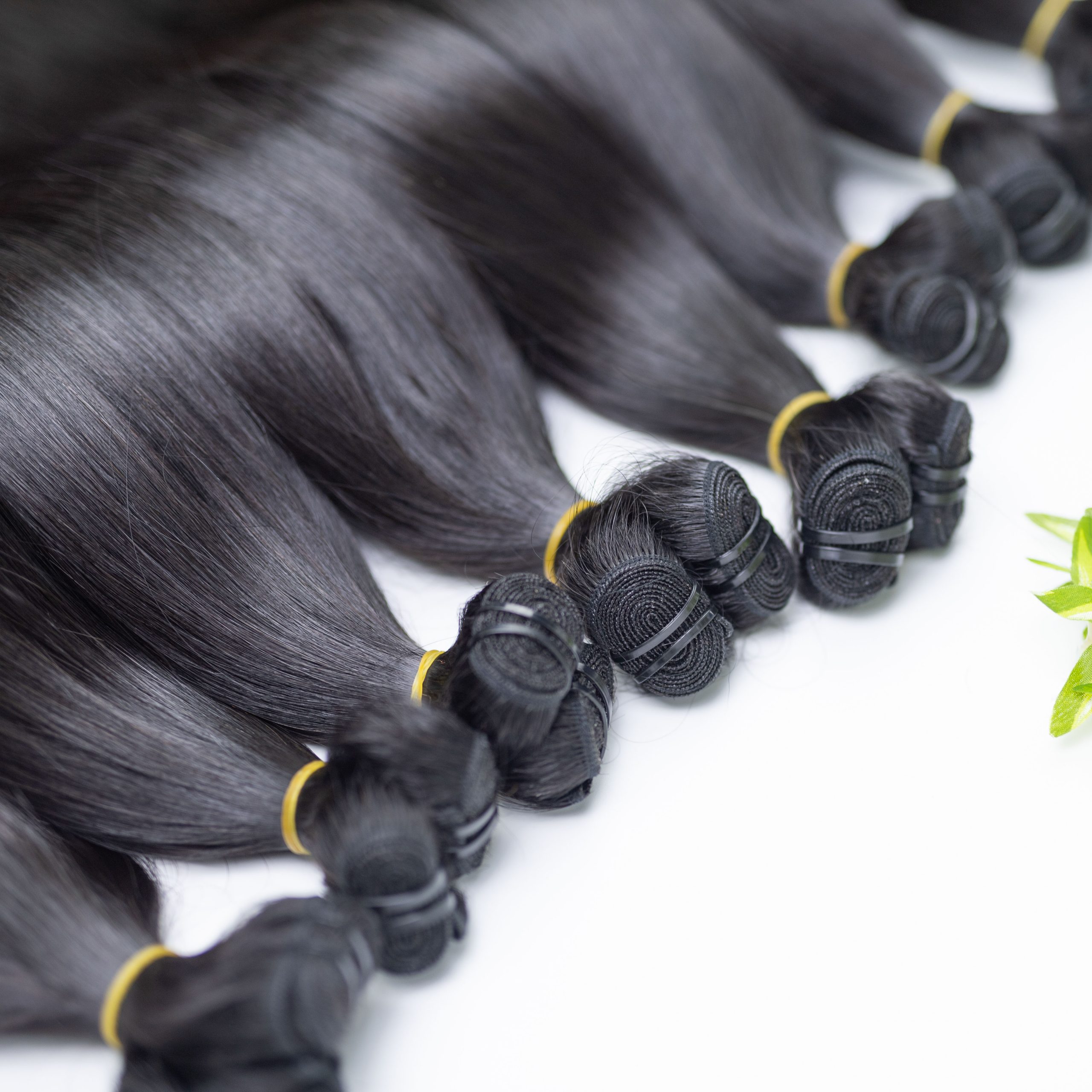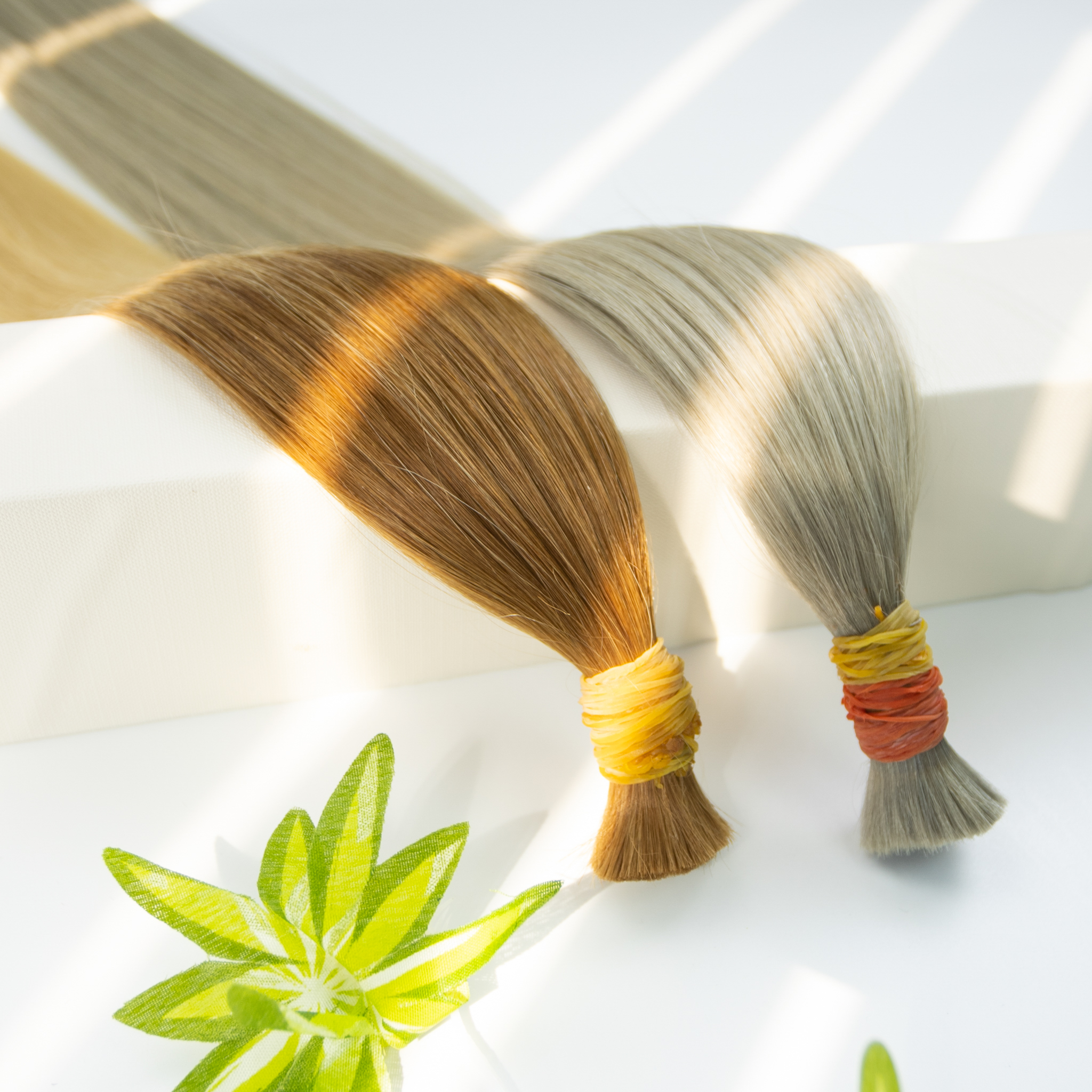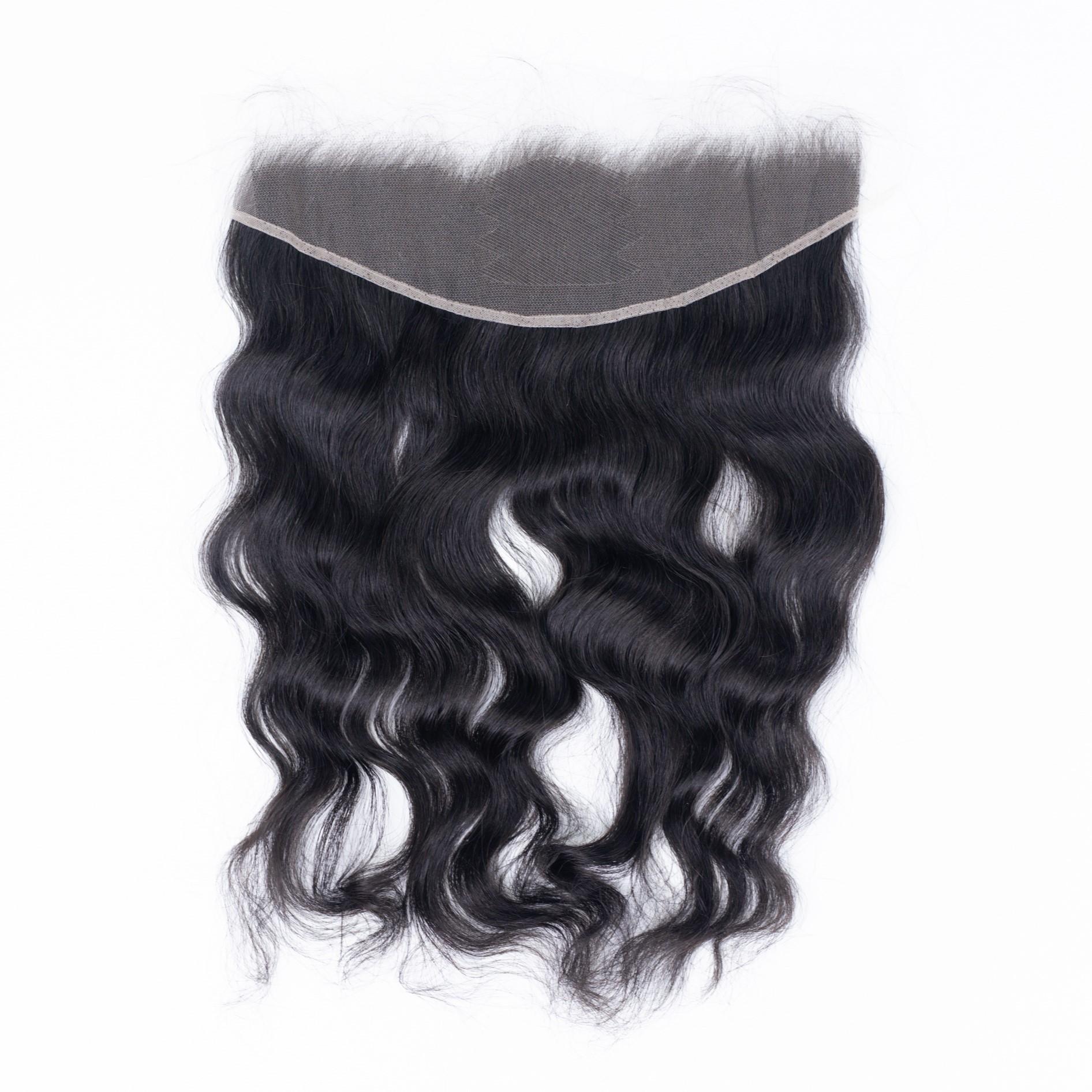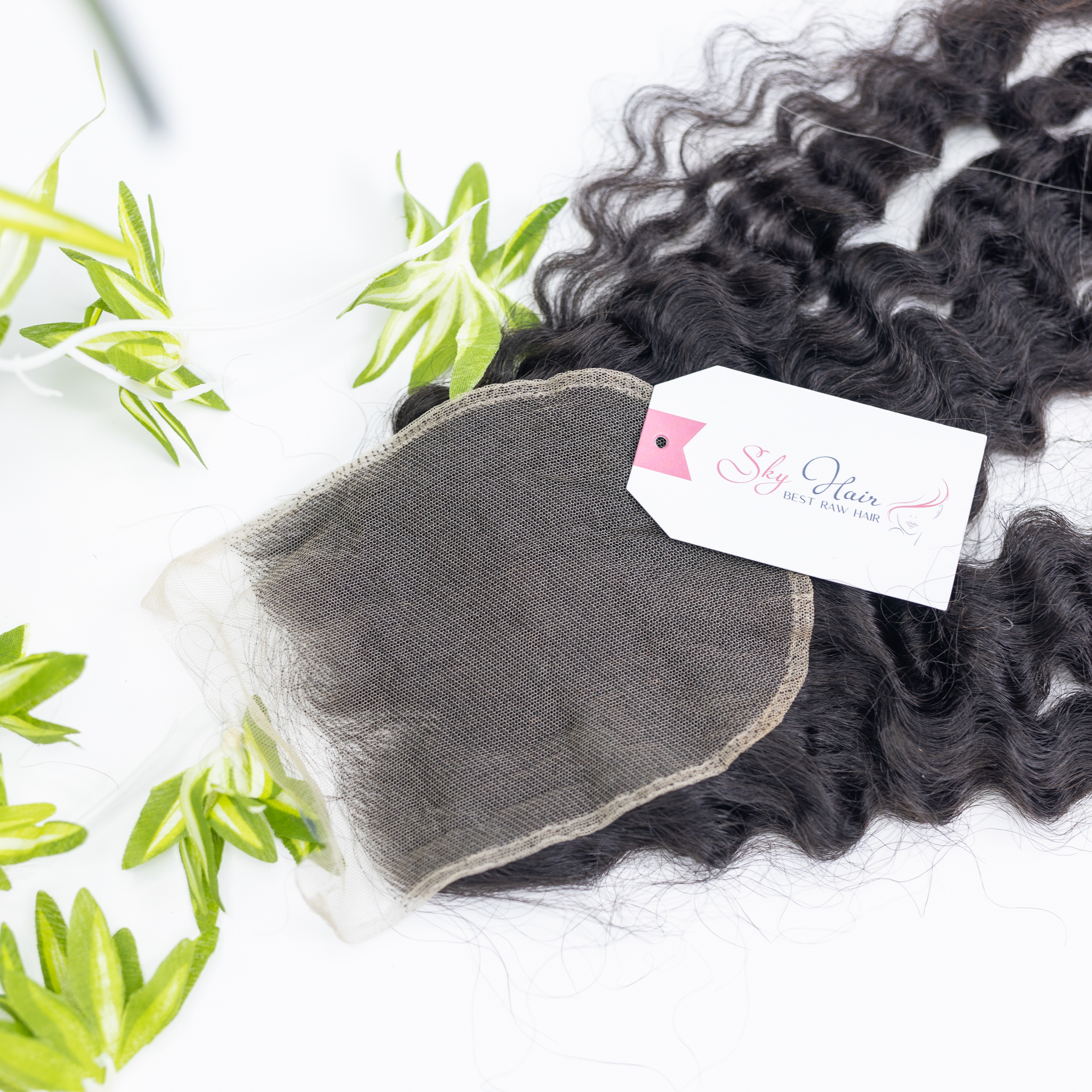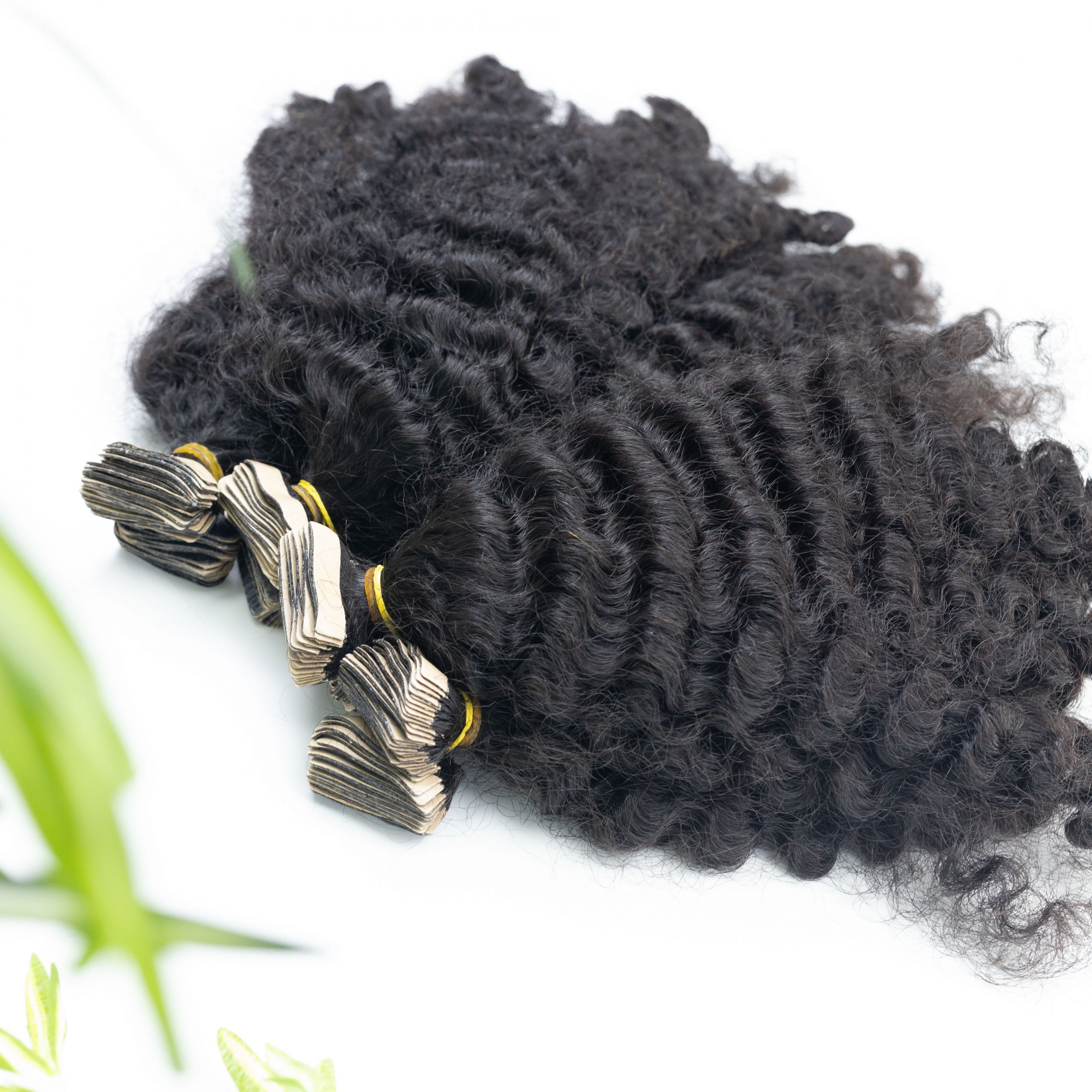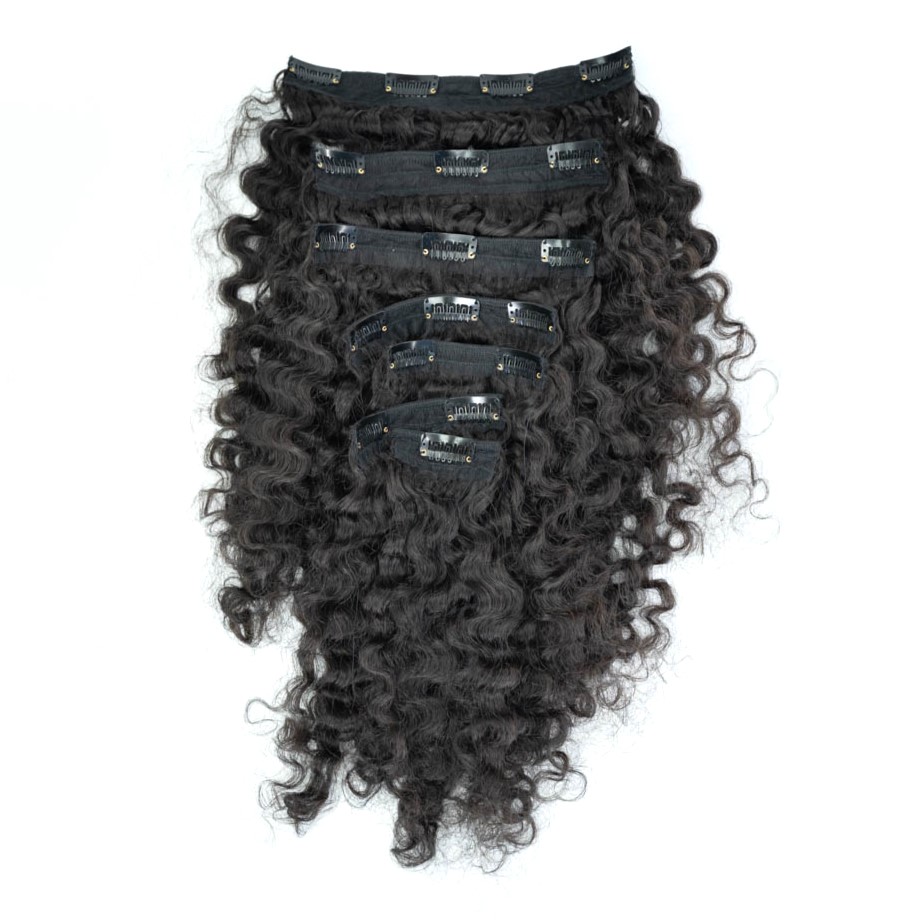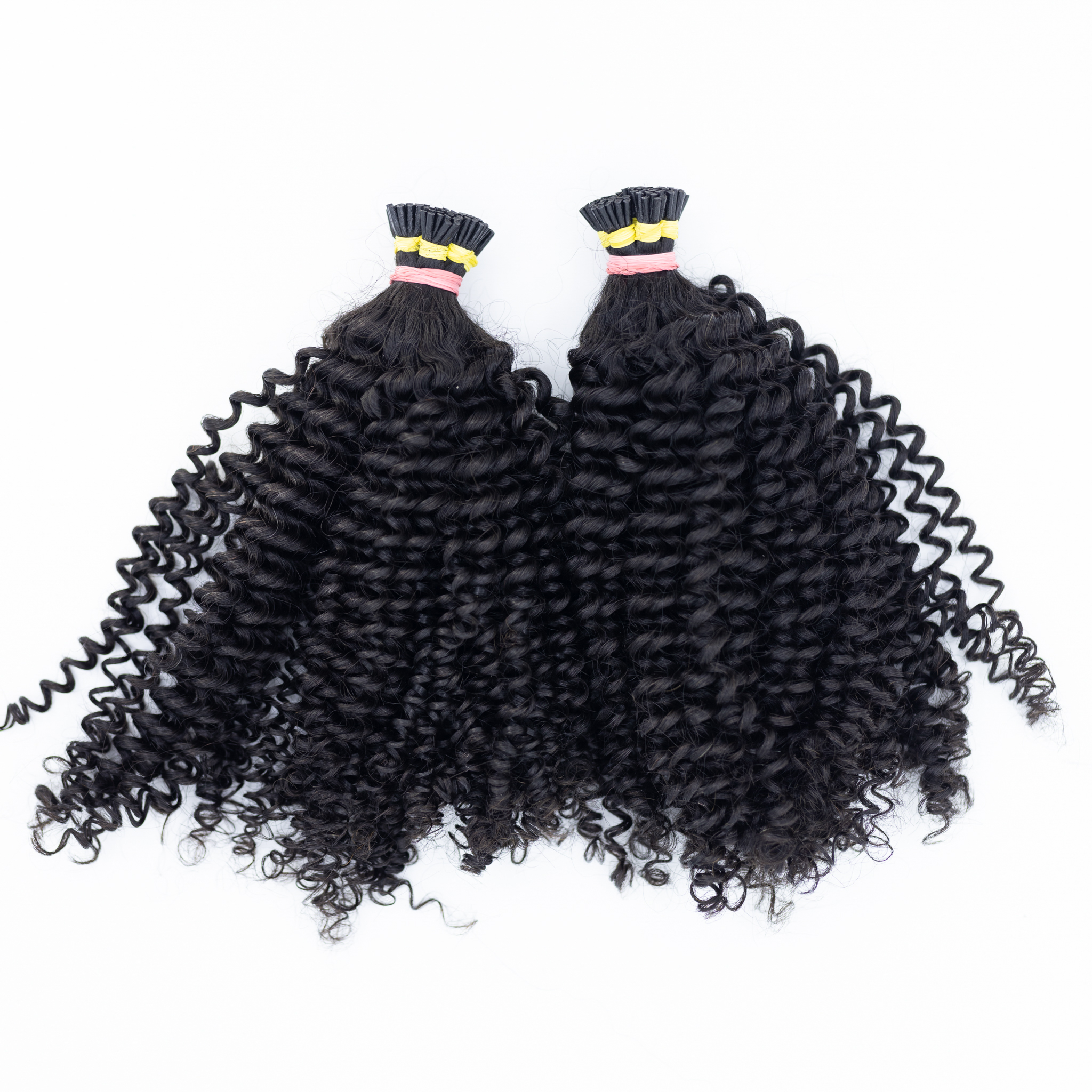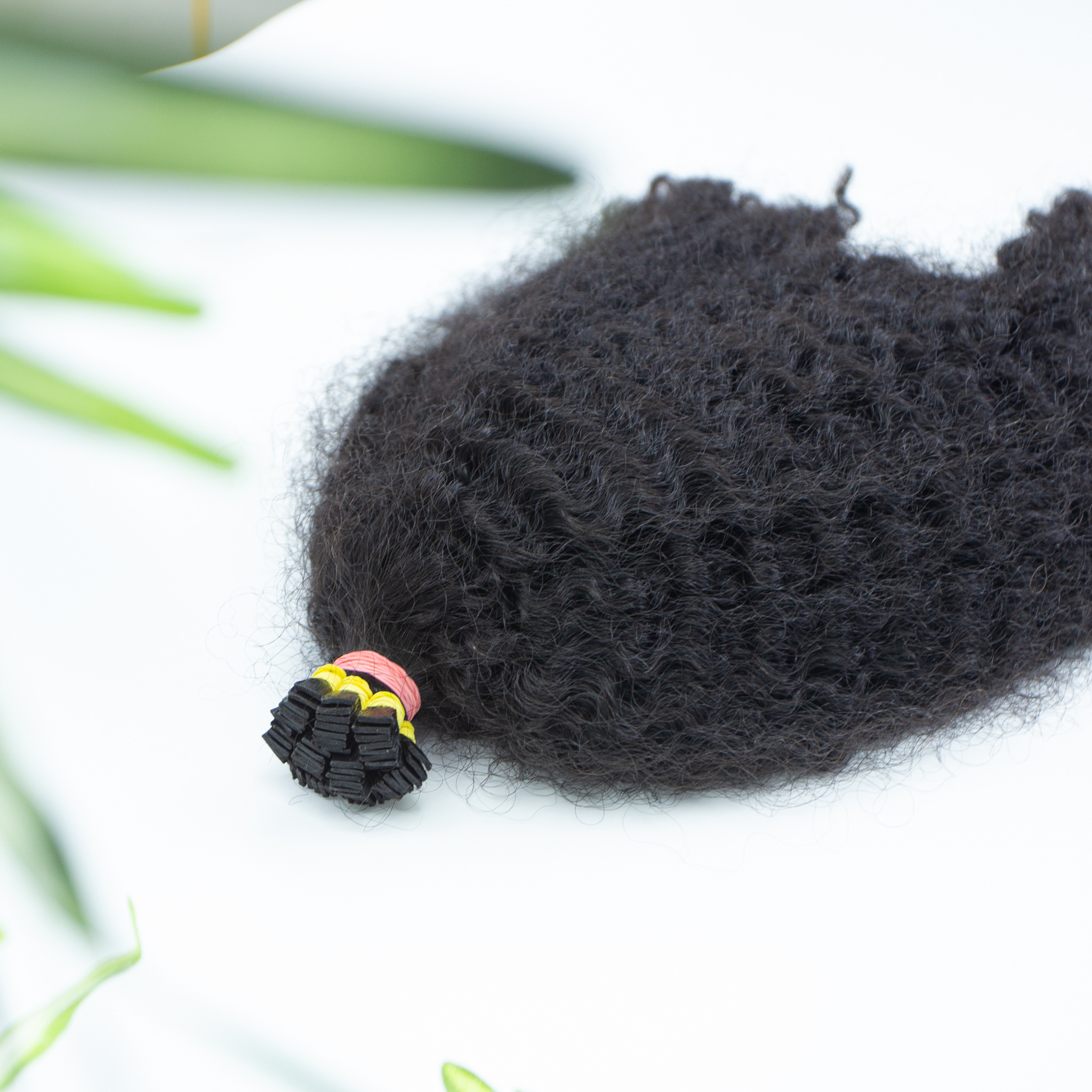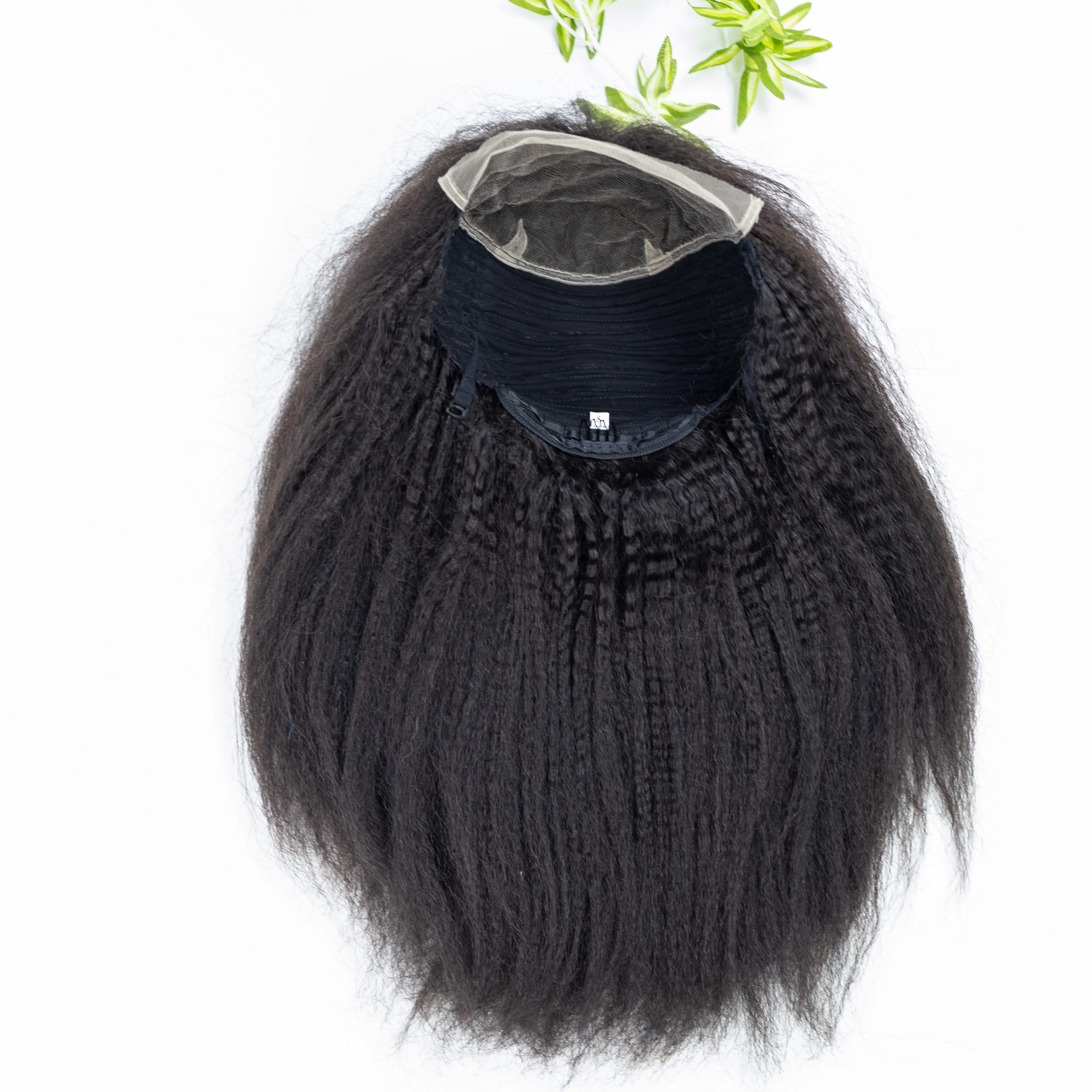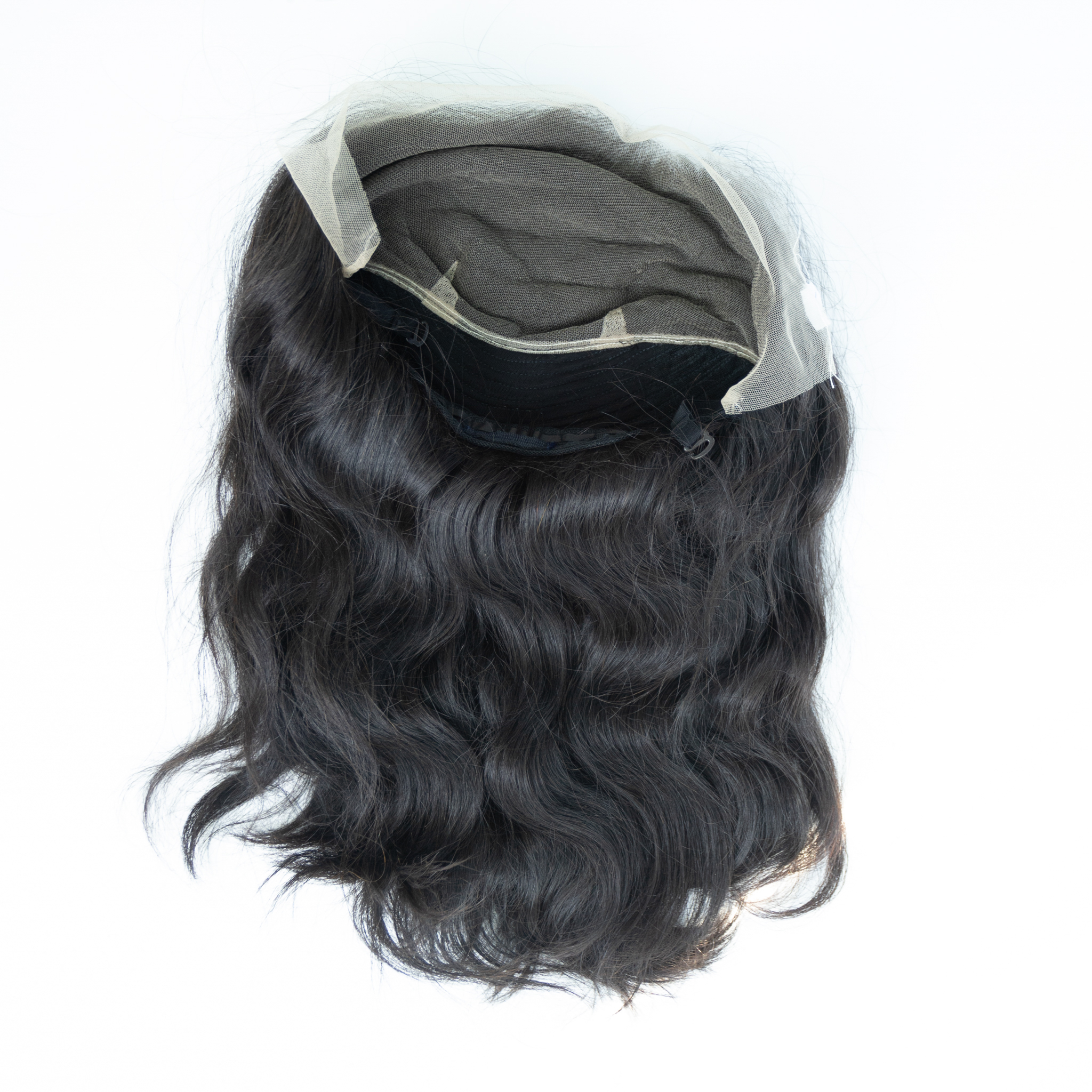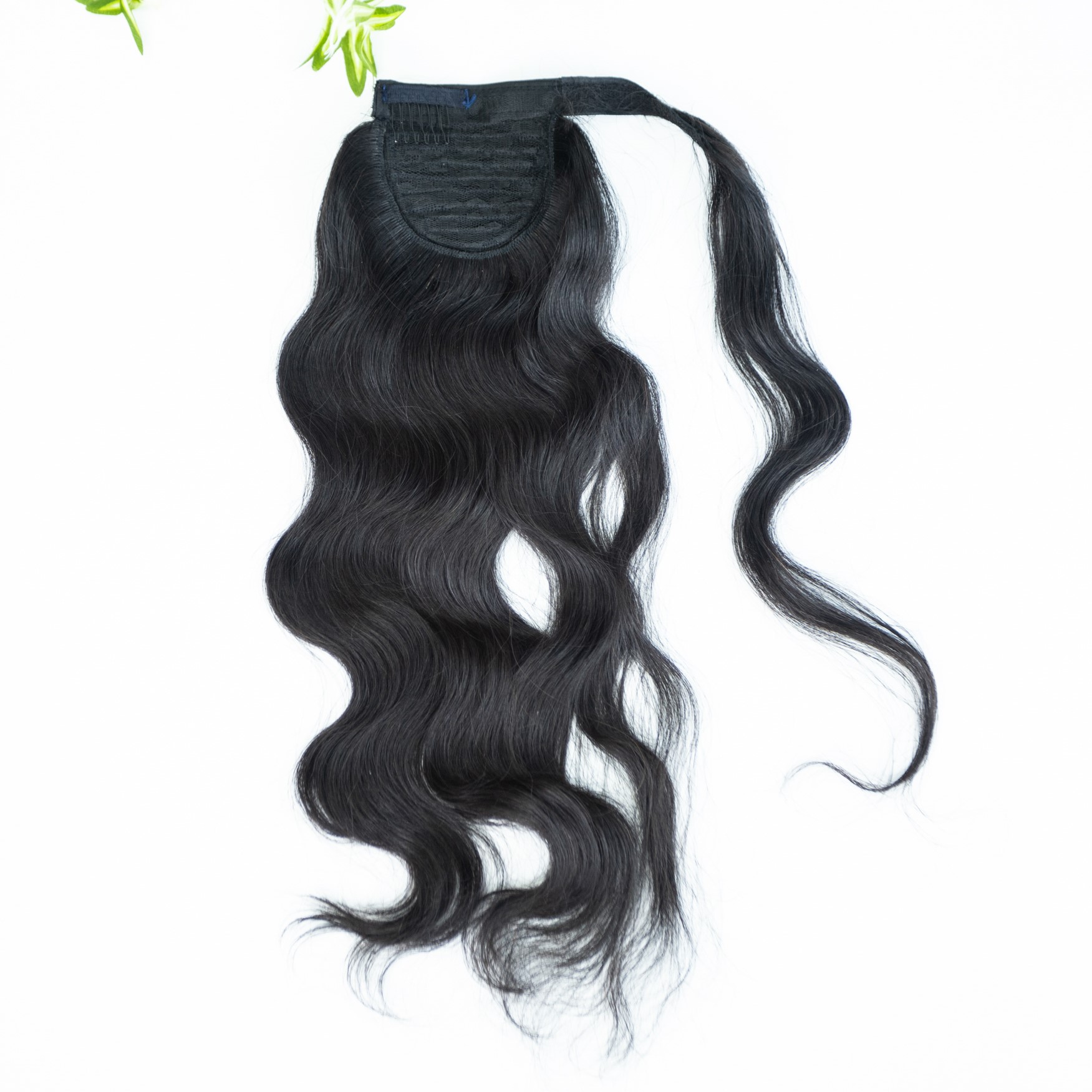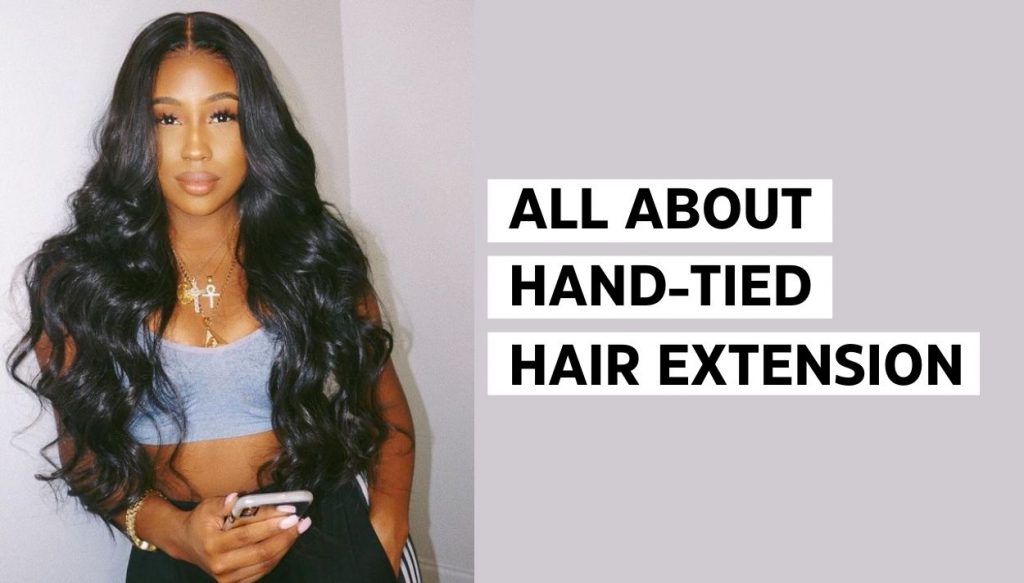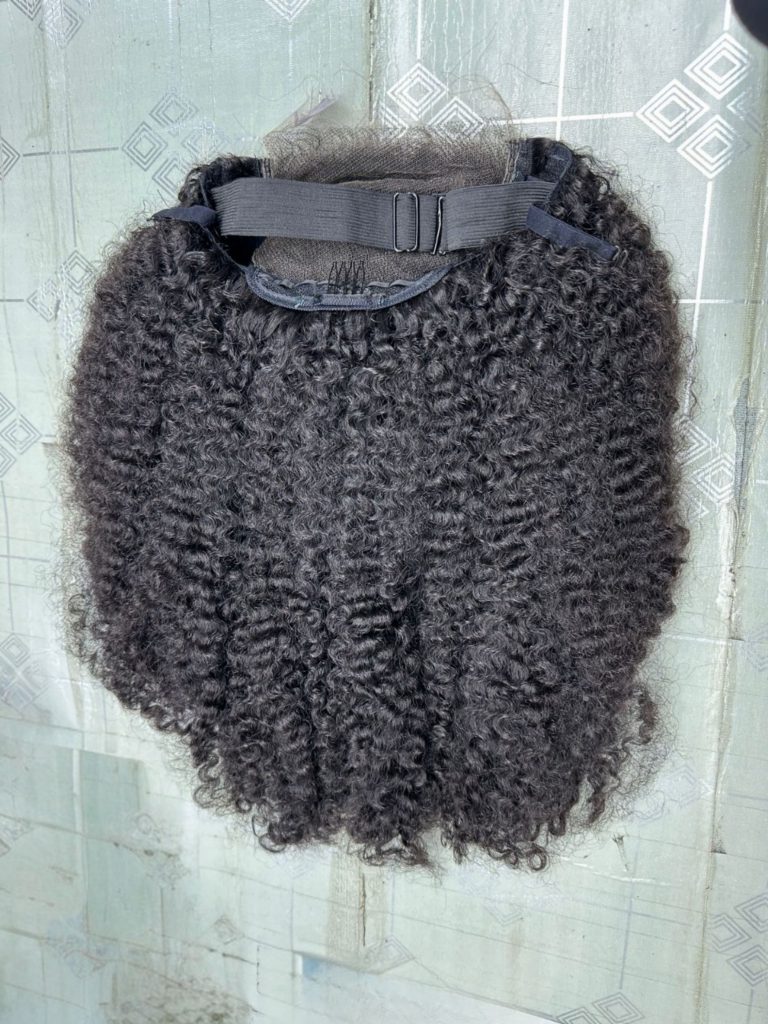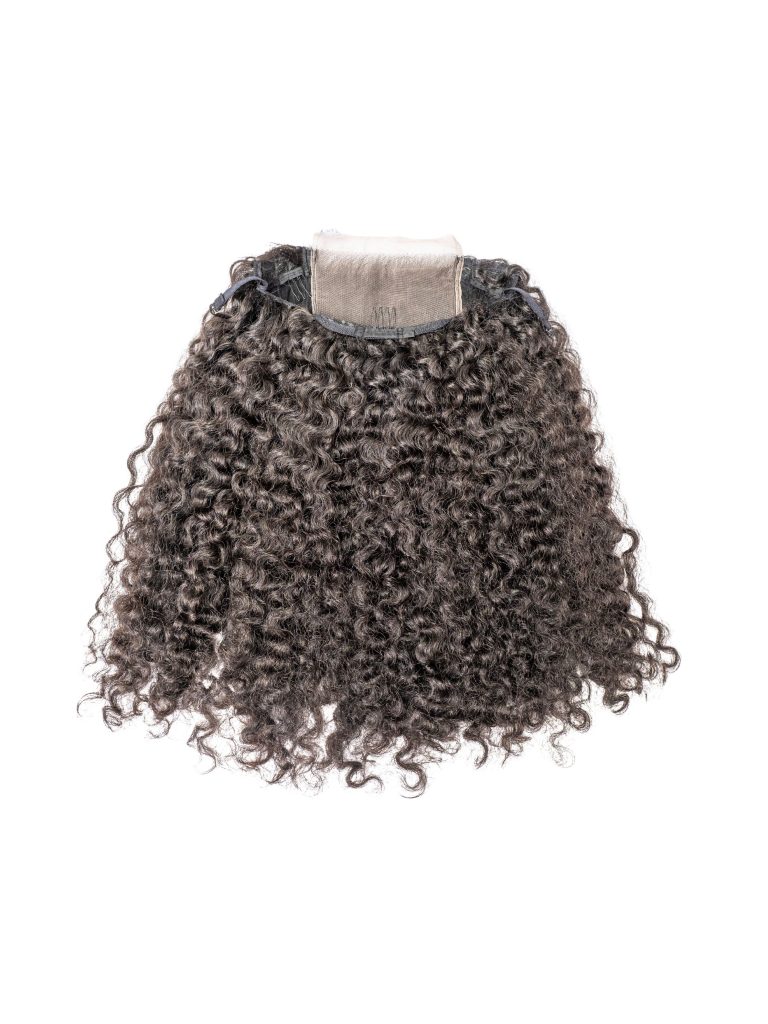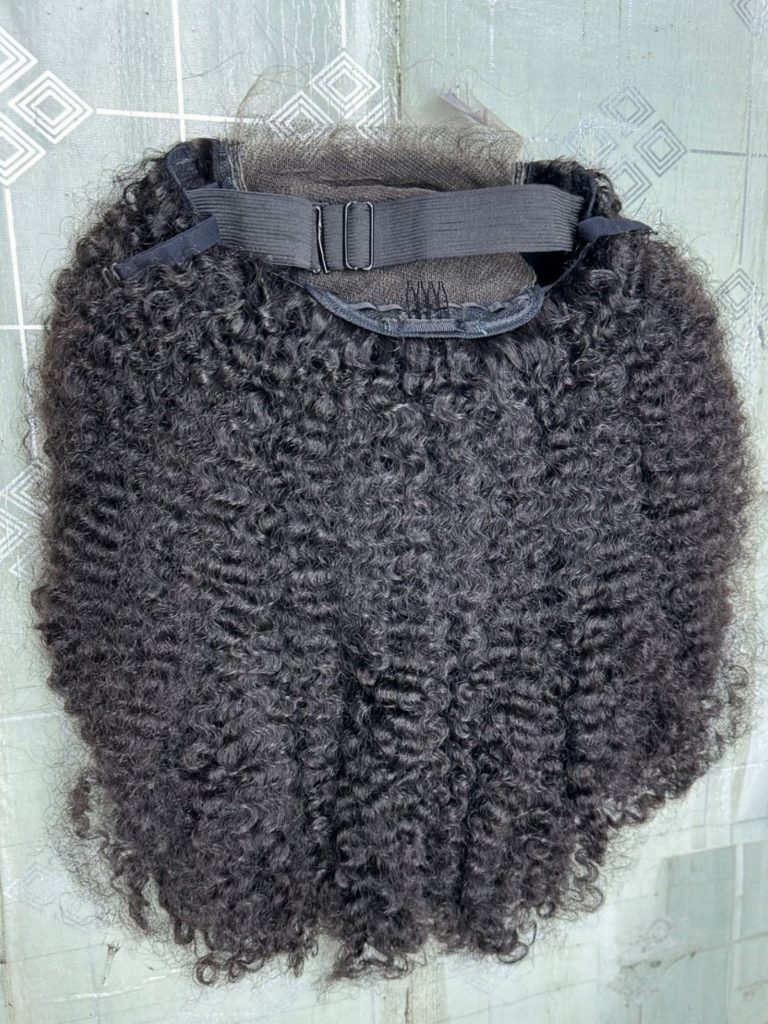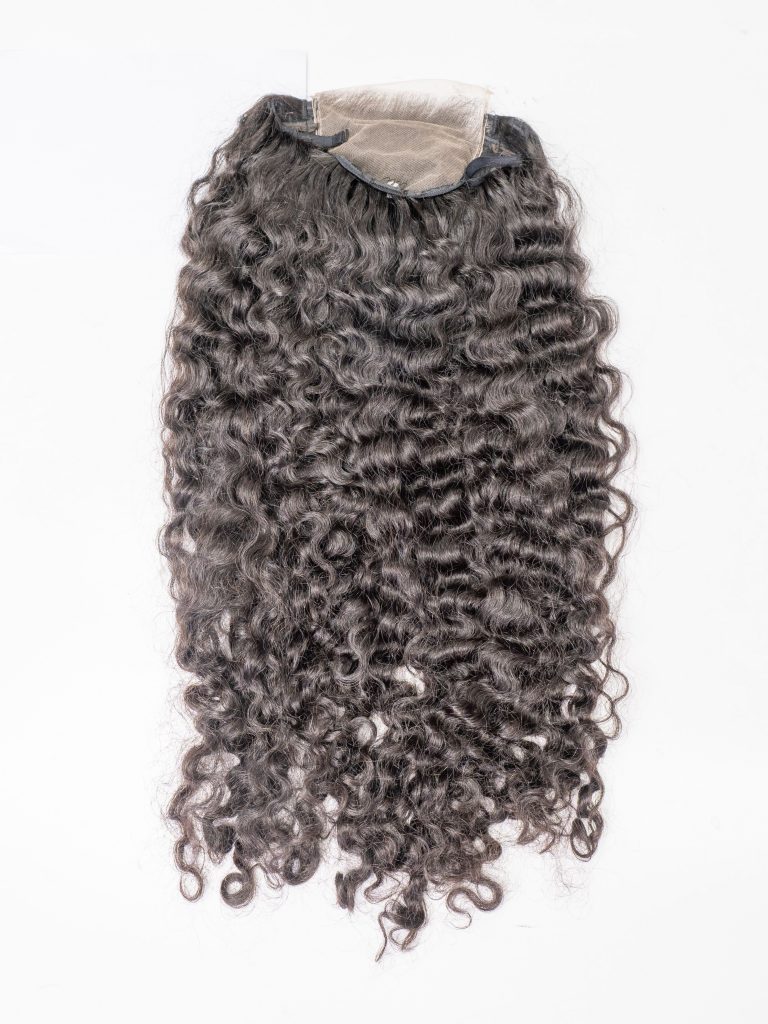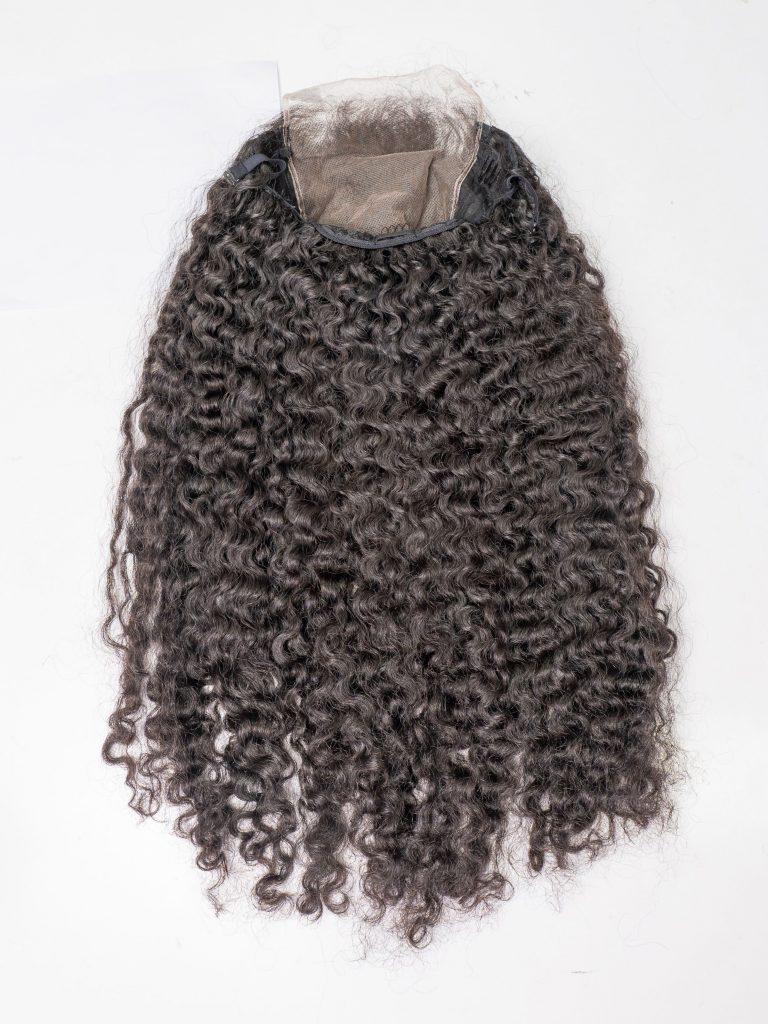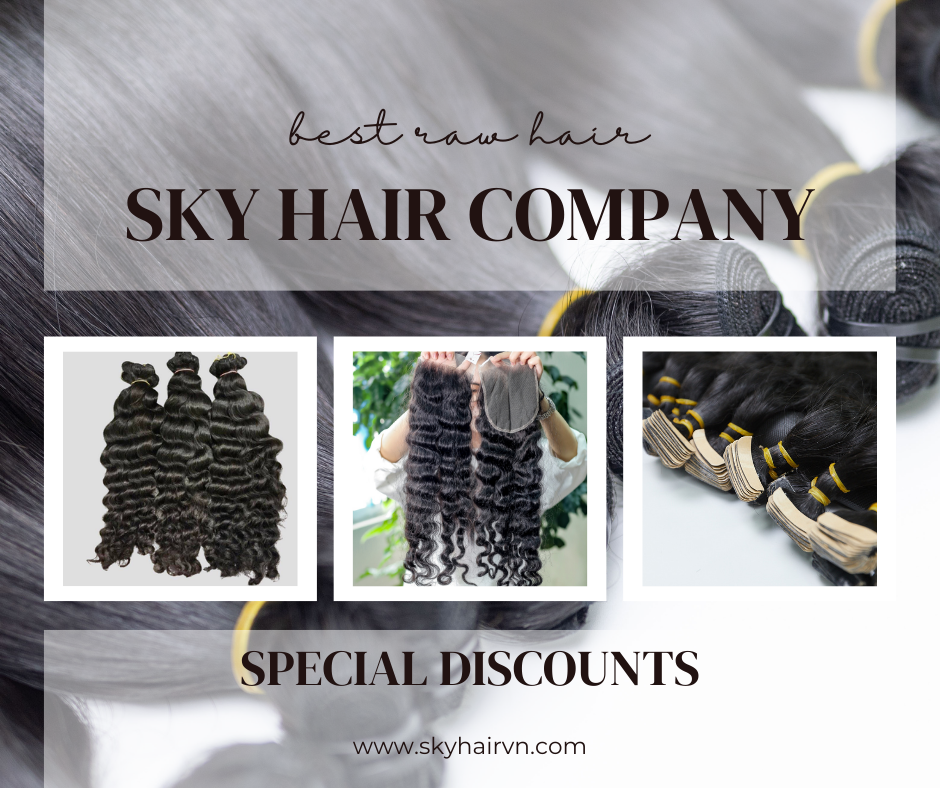Considering hair extensions and you’ve heard or read about something called hand tied hair extensions? Not quite sure what hand tied extensions are or if they are for you? Then you’re in the right place. I created this guide to help those who are considering hair extensions or hand tied extensions. In this post, I’ll cover what hand tied extensions are, how they are installed, and recommendations for choosing high-quality extensions, along with the benefits of hand tied extensions versus other methods. I’ll also answer several frequently asked questions about hand tied extensions so that you have a complete understanding of hand tied hair extensions.
What Are Hand-Tied Hair Extensions?
Hand tied extensions are a type of hair extension. There are many types of hair extensions on the market including hand tied wefts, machine wefts, tape-ins, and individual bonded extensions. Hand tied extensions are often a favorite due to their slim, lightweight construction. They can be customized by color and weight for the client or guest wearing them. Hand tied extensions are the best type of extension hair for creating luxurious volume, length and body.
Hand Tied Hair Extension Methods
The process of applying hand-tied extensions typically involves creating a beaded row along the hairline. Each bead is then individually attached to a small section of your natural hair. The wefts are then sewn onto these beads using a specialized needle and thread. This meticulous technique allows for a secure and comfortable fit, minimizing the risk of slippage or discomfort.
One of the key benefits of hand-tied extensions is their versatility. They can be styled in a variety of ways, including ponytails, updos, and loose waves. Additionally, hand-tied extensions are typically made from high-quality human hair, which can be colored, curled, and styled just like your own hair.
When extensions are installed using the hand tied hair extension method, no heat, chemicals, glue, or other adhesives are used to attach your extensions to your natural hair. And because of the application using the beaded track, hand tied extensions are able to lay flatter on your head than other extension types, creating a more natural look.
The hand tied hair extension method also alleviates tension or pressure points that can come with other hair extension methods, leading to much more comfortable extensions and healthier natural hair. In addition, when properly installed, the beads won’t touch your scalp, which means no rubbing or irritation and a healthier scalp.
How long do hand-tied extensions last?
Hand tied hair extensions last for 6-12 months with proper care and use of recommended professional products. High-quality, 100% real human hair extensions are recommended for best results. There are many sources for hand tied hair extensions. You can get wefts that are sourced from different parts of the world. Asian, Russian and Indian are the most common. Your licensed stylist may trim the extensions periodically to remove any damaged ends.
Are hand-tied extensions bad for your hair?
Hand tied extensions will not damage your hair if the proper method of application is used by a knowledgeable certified stylist. It is important to note that stylists are not required to be certified to apply hand tied hair extensions. For that reason, it is extremely important to research your stylist and make sure she is certified and has received extensive training in a quality installation method.
Recommendations When Selecting Hand-Tied Extensions
Choosing the right hand-tied hair extensions involves several factors to ensure they match your natural hair and meet your styling needs. Here are key considerations to guide you in selecting the best hand-tied hair extensions:
Hair Quality: Look for high-quality, 100% human hair extensions. Remy hair is a top choice as the cuticles are kept intact and aligned, preventing tangling and ensuring a natural look and feel.
Color Match: Your hair extensions should closely match your natural hair color for a seamless blend. Consider consulting with a professional stylist to find the perfect match, especially if you have highlights or multi-tonal hair.
Texture Match: The texture of the extensions should match your natural hair texture (straight, wavy, curly) to blend seamlessly when styled together.
Length and Volume: Decide on the length and volume you want to achieve with your extensions. Hand-tied extensions come in various lengths, and you can layer different lengths for a more natural look.
Installation Method: Hand-tied extensions are typically installed by a professional stylist using a specific technique that involves sewing the wefts onto a track of silicone beads attached to your natural hair. Ensure your stylist is experienced in this method to avoid damage to your natural hair.
Maintenance and Care: High-quality hand-tied extensions require proper care to maintain their appearance and longevity. Ask your stylist about the recommended products and care routine, including how to wash, condition, and style your extensions.
Lifestyle Considerations: Consider your lifestyle and daily activities. If you engage in regular exercise, swimming, or other activities, discuss with your stylist how your extensions will be impacted and how to care for them.
Budget: Hand-tied extensions can be a significant investment. High-quality extensions and professional installation cost more but also last longer and look more natural. Determine your budget and consider it as an investment in your appearance.
Consultation: A consultation with a professional stylist is crucial. They can assess your natural hair and discuss your desired outcome. They’ll also match the color and texture, recommend the amount of hair needed, and explain maintenance and care.
